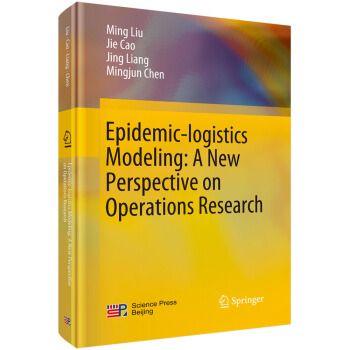基本介紹
- 中文名:
- 作者:
- 出版社:
- 出版時間:
- 頁數:
- 定價:
- 開本:
- 裝幀:
- ISBN:
內容簡介,目錄,
內容簡介
目錄
2.3.1 Introduction 33
2.3.2 Epidemic model with population migration 34
2.3.3 Model analysis 35
2.3.4 Numerical test 40
References 43
Chapter 3 Mixed distribution mode for emergency resources in anti-bioterrorism system 47
3.1 Introduction 47
3.2 Literature review 48
3.2.1 Literature related to epidemic prevention and control 49
3.2.2 Literature related to emergency distribution 50
3.3 Demand forecasting based on epidemic dynamics 51
3.3.1 SEIQRS model based on small-world network 51
3.3.2 Demand for emergency resources 52
3.4 Model formulations 53
3.4.1 Point-to-point distribution mode with no vehicle constraints 53
3.4.2 The multi-depot, multiple traveling salesmen distribution mode with vehicle constraints 54
3.4.3 The mixed-collaborative distribution mode 56
3.5 Solution procedures 58
3.5.1 Operating instructions for genetic algorithms 58
3.5.2 The solution procedure 59
3.6 Computational experiments and result analysis 60
3.6.1 Comparison and analysis for each stockpile depot 61
3.6.2 Comparison and analysis for total distance and timeliness 63
3.7 Conclusions 64
References 64
Chapter 4 Epidemic logistics with demand information updating—ModelⅠ: Medical resource is enough 67
4.1 Introduction 67
4.2 Literature review 68
4.2.1 Epidemic diffusion modeling 68
4.2.2 Medical resource allocation modeling 69
4.3 The mathematical model 70
4.3.1 SEIRS epidemic diffusion model 71
4.3.2 The forecasting model for the time-varying demand 73
4.3.3 Time-space network of the medicine logistics 74
4.4 Solution methodology 77
4.5 Numerical tests 78
4.5.1 A numerical example 78
4.5.2 Model comparison 81
4.5.3 Sensitivity analysis 83
4.6 Conclusions 84
References 85
Chapter 5 Epidemic logistics with demand information updating—ModelⅡ: Medical resource is limited 88
5.1 Introduction 88
5.2 Epidemic diffusion analysis and demand forecasting 91
5.2.1 Influenza diffusion analysis 91
5.2.2 Demand forecasting 93
5.3 The dynamic medical resources allocation model 95
5.3.1 Model specification 95
5.3.2 Notation 96
5.3.3 Model formulation 96
5.3.4 Solution procedure 97
5.4 Numerical example and discussion 97
5.4.1 Numerical example 97
5.4.2 Comparison and discussion 100
5.4.3 A short sensitivity analysis 102
5.5 Conclusions 102
References 103
Chapter 6 Integrated optimization model for two-level epidemic-logistics network 106
6.1 Introduction 106
6.2 Problem description 107
6.2.1 SEIR epidemic diffusion model 108
6.2.2 Forecasting model for the time-varying demand 109
6.2.3 Forecasting model for the time-varying inventory 111
6.3 Optimization model and solution methodology 111
6.3.1 The integrated optimization model 111
6.3.2 Solution methodology 113
6.4 A numerical example and implications 117
6.4.1 A numerical example 117
6.4.2 A short sensitivity analysis 122
6.5 Conclusions 123
References 124
Chapter 7 Integrated optimization model for three-level epidemic-logistics network 125
7.1 Introduction 125
7.2 Problem description 127
7.2.1 Model framework 127
7.2.2 Time-varying forecasting method for the dynamic demand 128
7.2.3 Dynamic demand and inventory for the UHD 129
7.3 Optimization model and solution procedure 129
7.3.1 Optimization model 129
7.3.2 Solution procedure 131
7.4 Numerical example 132
7.5 Conclusions 136
References 137
Chapter 8 A novel FPEA model for medical resources allocation in an epidemic control 139
8.1 Introduction 139
8.2 The mathematical model 141
8.2.1 Forecasting phase 142
8.2.2 Planning phase 144
8.2.3 Execution phase 150
8.2.4 Loop closed 150
8.3 Numerical example 152
8.3.1 Test for forecasting phase 152
8.3.2 Test for logistic planning phase 153
8.3.3 Test for adjustment phase 157
8.4 Conclusions 159
References 159
Chapter 9 Integrated planning for public health

